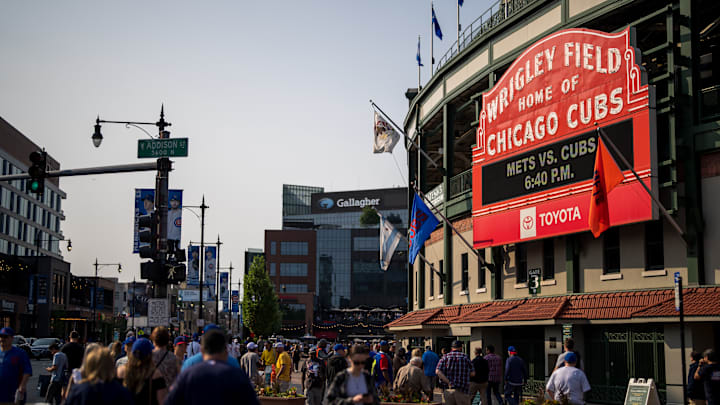Ten years ago was the 100th year of Wrigley Field, which opened in 1914 as Weeghman Park for the short-lived Federal League. The 2014 season would see not only the Theo Epstein rebuild start to take shape but also signal new beginnings at the corner of Clark and Addison. Immediately after the Chicago Cubs' final home game on September 24 of that year, the first phase of a multi-year mass renovation of the historic ballpark would begin.
Let's go back to the 2014 season at Wrigley Field. While die-hard Cubs fans have always loved The Friendly Confines, it's amazing to look back at the state of the park as it was then compared to now.
In 2014, the old grandstand was barely held together with patchwork solutions. The concrete was old and crumbling, the ancient steel bone structure was rusting, the clubhouse facilities were tiny and dated by several decades, the bathrooms were ancient, walking space around the park lacked, few amenities besides basic food, no video boards, and the Clark side of the park was an ugly parking lot. It was a "big deal" when the barely noticeable Toyota sign was erected in the left field bleachers in 2010. Most fans were not used to major changes to the park outside of the lights being added in 1988. It had pretty much stayed the same park for 50+ years.
Fast forward to today. The Cubs now have some of the best player and staff facilities in baseball, along with many modern fan amenities and a new gathering area with new businesses around the park. This has allowed Wrigley to be utilized for the public both during baseball season and the offseason. The idea of having video boards, private clubs, sportsbooks, and extensive shops on the grounds was once unthinkable. Fans might not have thought about much of these things before the renovation project but have been able to experience what it's like to have this stuff for the first time over the past few years. Oh, and having a park that's structurally sound and safe now is nice too.
What a difference 10 years can make. While the historic marquee, manual scoreboard, ivy-covered walls, grandstand shape, and overall charm have been preserved, much of the Wrigley many fans knew for a long time is gone. The lower bowl seating of the grandstand was completely demolished and rebuilt, the dugouts also rebuilt, and the bleachers themselves have now been rebuilt twice in the 21st century. Even this offseason the old roof which once held the infamous protective netting is being replaced.
Wrigley Field has now fully taken the shape of what it will be for the foreseeable future. Before we know it there will be an entire generation of fans who only know the "video board era" Wrigley and the old generation will be rambling on about the days of no boards, Gallagher Way, or clubs at the park. Hard to believe we are hitting a decade since this process all began.
